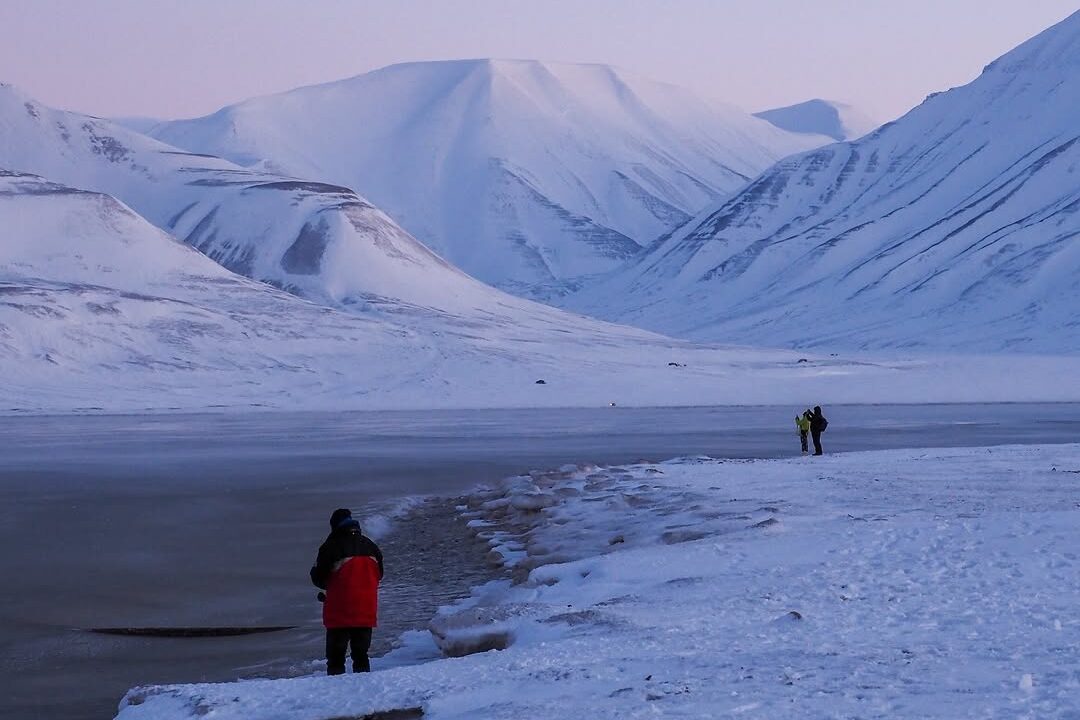A European Paradise Where You Can Live and Work Without Visa

Svalbard is one of the world’s northernmost inhabited places, a remote Arctic archipelago where glaciers stretch for miles, polar bears roam freely, and the sun and darkness alternate in extremes. Located 650 miles north of mainland Norway, it is home to approximately 2,500 residents from over 50 countries, all drawn to its breathtaking landscapes and unique way of life.
Despite its isolation and harsh climate, Svalbard stands out for its open immigration policy which affords anyone—regardless of nationality—the freedom to live and work here without a visa or residence permit.
But while legal entry is easy, the Arctic environment might not be for everyone.
What About Svalbard’s Open Immigration Policy?
Svalbard operates under a remarkable immigration policy established by the 1920 Svalbard Treaty. This international agreement signed after World War I granted Norway sovereignty over Svalbard while simultaneously creating an extraordinary legal framework for immigration.
Unlike conventional immigration systems that require visas, residence permits, and lengthy bureaucratic processes, Svalbard allows citizens from any nation worldwide to settle and work freely on its territory. No visa applications need to be filed, no residence permits require approval, and no work authorizations require processing.
Immigration policies across most nations typically involve complex documentation, proof of sufficient funds, background checks, and sometimes sponsorship requirements. Svalbard bypasses all these traditional barriers through provisions outlined explicitly in the treaty.

Citizens of any country—regardless of nationality—possess legal rights to live and work in Svalbard indefinitely. Japanese citizens, Brazilian nationals, Kenyan residents, or Canadian passport holders all enjoy identical settlement privileges without discrimination based on country of origin.
According to the Nordic Cooperation, “Svalbard is not part of the Schengen co-operation, and foreigners need neither a visa nor a work or residence permit to stay on Svalbard. However, a visa for the Schengen area is required when travelling via the Norwegian mainland.”
Important Things to Take Note of Before Making the Move
Moving to Svalbard sounds like stepping into a dream—a land of untouched Arctic beauty, where borders don’t bind your freedom to live and work. But before you pack your bags and book that one-way ticket, there are some critical things to understand. Surviving here isn’t just about legalities—it’s about resilience, adaptation, and a willingness to embrace the extreme.
The Harsh Realities of That Arctic Life
Unlike bustling European cities, where every necessity is just a short walk away, Svalbard requires one to plan, prepare, and persevere.
Agriculture? Nearly impossible. The Arctic conditions make growing food a distant dream, forcing residents to rely on imported goods that come at a high cost. Even starting a business isn’t straightforward—strict environmental laws protect the fragile ecosystem, placing heavy restrictions on land use and commercial activities. The land may be free to settle on, but making a living here takes far more than just ambition.
Then, there’s the wildlife—untamed and unforgiving. Svalbard isn’t just cold—it’s wild. Polar bears roam freely, and stepping outside settlement zones isn’t just an adventure; it’s a calculated risk. Firearm training is a requirement, not an option. Every outdoor excursion, whether a casual hike or a research expedition, carries the weight of potential danger.
Infrastructure is also minimal. Everything—food, construction materials, medical supplies—is imported. That means high prices and complete dependence on supply chains. If a shipment is delayed, essentials become scarce. Even healthcare is limited, with serious medical cases requiring an emergency evacuation to mainland Norway—an expensive and potentially life-threatening delay.
But beyond all of this, Svalbard tests the mind as much as the body, with its none too common seasons.
The Midnight Sun: A World Without Night

From mid-May to late September, Svalbard is bathed in constant daylight. By the time summer officially arrives on May 17th, the Midnight Sun has already dominated the sky for over a month—and it won’t dip below the horizon until late August.
At first, this eternal daylight feels magical, like stepping into a dream where time stands still. Days and nights merge into one, and the sun circles above without ever setting. But as the weeks pass, reality sets in: the body’s natural rhythm begins to unravel. Humans and animals alike lose track of time, drifting in a world where the usual cues of morning and night no longer exist. Without blackout curtains and strict bedtime routines, sleep becomes a battle, exhaustion creeps in, and mental clarity fades.
The Polar Night: When Darkness Reigns

Then, as if nature itself were flipping a switch, the light fades. By early October, evenings grow darker, and daylight dwindles with each passing day. By the end of the month, Svalbard plunges into the dark season, a time of deep blue landscapes and midday twilight. But the true test arrives in mid-November, when the polar night takes full control.
For two and a half months, the sun never rises. There is no dawn, no dusk—just continuous darkness. This isn’t just winter; it’s the total absence of daylight, an experience that only Svalbard can offer in Norway. The human body wasn’t designed for this, and without careful strategies, fatigue, low energy, and seasonal depression become real threats. Yet, paradoxically, the polar night brings one of Svalbard’s greatest gifts—the Northern Lights, shimmering across the sky at any hour, even in the middle of the day.
As February nears its end, the darkness slowly retreats, making way for the final spectacle of the dark season—the “blue hour”. For a brief period, the entire landscape is painted in stunning blue hues, a farewell gift from the long night before the sun returns.
Pastel Winter: A Delicate Transition

By March, the darkness is finally breaking, but Svalbard doesn’t jump straight into spring—it enters what locals call the pastel winter. The light grows stronger, but the land remains locked in deep snow and ice. From early March to mid-April, the sun barely peeks over the horizon, casting a surreal mix of soft blues, pinks, and purples over the Arctic terrain.
This shift isn’t just visual—it transforms the way people live. The long months of indoor life give way to exploration and adventure. Snowmobiles cut through the frozen wilderness, dogsled teams race across the tundra, and skiers take to the slopes under a sky that never truly darkens. By April 20th, the Midnight Sun is back, bringing with it a new cycle of energy, movement, and adaptation.
Employment Opportunities in Svalbard
Svalbard isn’t also a land of endless job opportunities. However, for those with the right skills, it offers a chance to carve out a unique career path. The job market here is specialized, catering to industries that thrive in the Arctic:
- Mining: Once the backbone of Svalbard’s economy, now a shrinking but still present sector.
- Tourism: Guides, hospitality workers, and service staff help visitors experience the magic of the Arctic.
- Research: With institutions like Ny-Ålesund, scientists study climate change, polar ecosystems, and Arctic conditions.
- Education: The University Centre in Svalbard (UNIS) hires academics in specialized fields.
- Government Administration: Limited positions exist within local governance.
- Service Industry: Restaurants, shops, and essential infrastructure depend on workers to keep life running smoothly.
Fluency in Norwegian is often an advantage, though English is widely spoken. Jobs tend to be seasonal and competitive, requiring adaptability and multiple skill sets to sustain long-term employment. Many who thrive here work across several sectors, shifting between tourism, service, and other fields as opportunities change with the seasons.
How to Reach Svalbard for Permanent Work
Moving to Svalbard might seem straightforward due to its visa-free policy, but before making the move, it is strongly recommended to secure a job or a place in an educational program first, as all residents—both foreigners and Norwegians—must prove they have sufficient funds to support themselves. Unlike mainland Norway, there is no social welfare system in Svalbard, meaning financial independence is a requirement, not a choice.
Additionally, since there are no international flights directly to Svalbard, all travelers must transit through mainland Norway, which is part of the Schengen Area. If a traveler requires a Schengen visa, it must include double-entry permission, allowing re-entry to Norway after arriving in Svalbard. Flights to Longyearbyen, Svalbard’s main settlement, are available from Oslo or Tromsø, but schedules can be limited, especially in winter.
Once in Svalbard, new residents must register in the Population Register within 8 days of arrival if they plan to stay for at least six months. Registration takes place at the tax office, and is required in the following cases:
- Moving to Svalbard for six months or longer
- Changing residence within Svalbard for at least six months
- Moving away from Svalbard
Being officially registered as a resident grants certain rights, including hunting and fishing permits, firearms licenses, alcohol ration cards, and access to health services. However, even after registration, Svalbard residents are not considered residents of Norway, so it’s essential to check with your home country about your legal rights, tax obligations, and access to social services while living in Svalbard.
Could Svalbard Be the Place for You?
Living in Svalbard means embracing isolation, extreme weather, and an unpredictable environment. The Arctic is not forgiving, and daily life requires planning, resilience, and the ability to adapt. There are no shortcuts to surviving here, and those who arrive unprepared will quickly realize that Svalbard does not make exceptions.
Yet for those who are ready for the challenge, this remote archipelago offers something rare—a life of true independence, adventure, and connection to nature in its purest form. The polar night and midnight sun reshape your sense of time, the vast wilderness becomes both your home and your greatest teacher, and the close-knit international community creates bonds unlike anywhere else.
Moving to Svalbard is not an easy decision, nor should it be. But if you’re seeking a life beyond the ordinary, where every day pushes you to grow, adapt, and experience the Arctic in all its extremes, then this frozen frontier might just be the place for you. It won’t be easy—but for the right person, it will be worth it.
Featured Image from Visit Svalbard on Instagram
Loading...
Related Content
 When Science Shows Our Bones Can Rise Again
When Science Shows Our Bones Can Rise AgainBy Prince Ea





